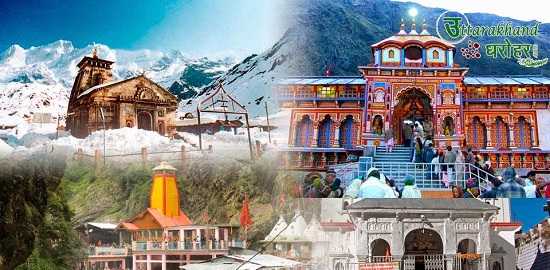Talk to anyone about undertaking Char Dham yatra in winter and they will stare at you as if you are not in your right mind because the Char Dham Yatra usually starts around the end of April and lasts until early October when the celestial idols descend from the sacred shrines to more earthy dwellings. So, it comes as a surprise when the state government of Uttarakhand has announced Char Dham Yatra in winter for the first time. There is a saying that only mad dogs and Englishmen go out in the hot Indian summer sun. Likewise, no sane man would venture into the craggy, inhospitable mountains of Uttarakhand in winter when there is heavy snowfall and the roads are likely to be blocked. You can, however, trust the Chief Minister, Harish Rawat and undertake the Yatra in winter. This is because the Honorable Minister has promised better infrastructure, facilities for dining and even night shelters for pilgrims, starting next season, not this year.
In a surprise move, the Chief Minister started off the Char Dham Yatra with a tour to Badrinath, Kedarnath, Yamunotri and Gangotri on 14th December right in the middle of the fiercely cold winter season, long after the season ended in the middle of October. The char dham yatra is a great money spinner for the state government. Over 2 million visitors were recorded in 2012 and the yatra did receive a setback during 2013 and 2014 due to heavy floods and rains but this year, it looks like there may be even more visitors touching the 3 million mark. The government is doing all it can to provide better facilities to tourists. For one, it has announced free (at least one leg) yatra to those over 65 years of age. Secondly, it has promised provisioning of bio-friendly toilets along the route. Thirdly, it is going ahead full steam with the work of repairing the roads and now we have this news that there will be rest houses and dining facilities for pilgrims. This is a welcome, especially in view of the fact that at the actual holy spots such as Yamunotri, Kedarnath, Gangotri and Badrinath, there is very little pilgrims can expect in terms of good food. They have to carry victuals themselves or eat whatever is available at these places. If God has not answered their prayers, at least the chief minister has and the promise of dining and resting facilities are more than welcome as is the news of toilets and better roads.
This should motivate even more people to undertake the char dham yatra even if it is not purely for spiritual reasons. The government is optimistic in expecting a huge rush and earning generous revenues this year. With revenues in mind or convenience of tourists in mind, it has now announced that the yatra will even continue during winter months, at least up to January when heavy snowfall makes travel impossible. What one wonders is how will yatris get a darshan of their favorite deity when the temple is locked and the main deity is brought down to the winter residence? Will the char dham yatra then include a visit to the place where the deities reside in winter? If this happens then Ukhimath, Joshimath, Mukhba and Kharsali, places that are not quite so well known as Yamunotri, Gangotri, Kedarnath and Bardinath, could well find their way on to the tourist map and become places of importance in their own right.
Ukhimath is a tiny hamlet just before Chopta. This is the winter home of Lord Kedarnath or Shivji, who descends from Kedarnath to the Omkareshwar Temple once the main temple above is closed due to snowfall. Mukhba is a small village in Harsil located on the banks of the Bhagirathi River and one to which tourists pay scant attention but this is where Ganga Mata descends in winter. Kharsali is another diminutive village but it is the all important winter home of Yamuna Maa. Joshimath is where Lord Badrinath descends for his winter sojourn from the upper reaches of Badrinath. Of these four destinations only Joshimath is better known since it is the starting point to treks to the Valley of Flowers. Should winter char dham yatra gain momentum, these four spots will grow and this will undoubtedly benefit the local population besides earning more revenue to the Government.



 Call
Call WhatsApp
WhatsApp Enquiry
Enquiry




Leave a Reply